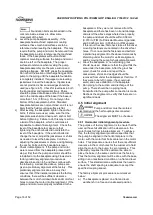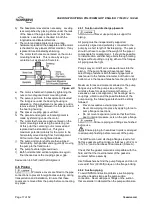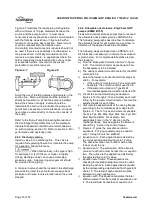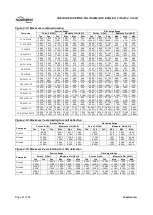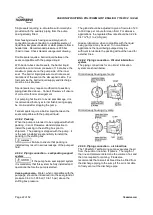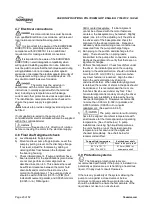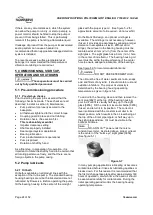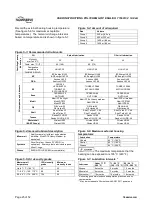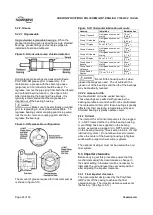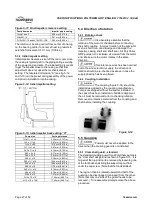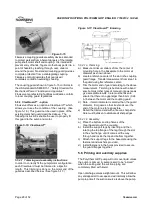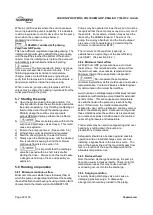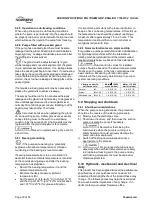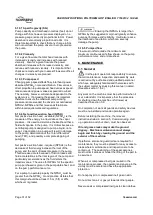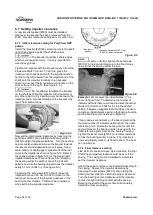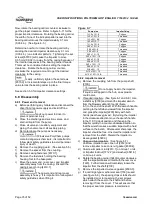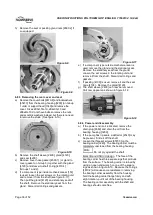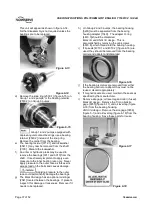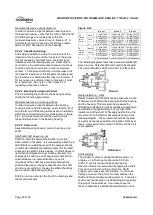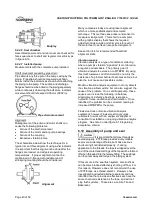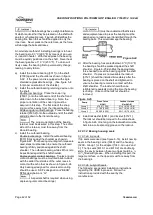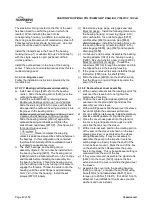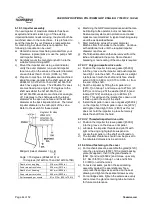
USER INSTRUCTIONS POLYCHEM GRP ENGLISH 71569132 12-04A
Page 29 of 52
flowserve.com
When a condition exists where the suction pressure
may drop below the pump’s capability, it is advisable
to add a low-pressure control device to shut the pump
down when the pressure drops below a
predetermined minimum.
1K3x2GS-7 unitized self-priming
PolyChem GRP pump
This has a different requirement regarding priming. The
initial priming liquid must be added to the pump casing
until the liquid has reached the bottom of the suction
nozzle. Once the initial prime is in place, the pump will
automatically replenish itself and be self-priming.
The time required to prime can range
from a several seconds to several minutes. If the
fluid being pumped is sensitive to temperature
change, please contact Flowserve engineering to
verify that the temperature increase will not create a
dangerous condition inside the pump casing.
When in service, pumps using inlet pipes with foot
valves may be primed by passing liquid back from the
outlet pipe through the pump.
5.7 Starting the pump
a) Open the suction valve to full open position. It is
very important to leave the suction valve open while
the pump is operating. Any throttling or adjusting of
flow must be done through the discharge valve.
Partially closing the suction valve can create
serious NPSH and pump performance problems.
b)
Never operate pump with both the
suction and discharge valves closed. This could
cause an explosion.
c) Ensure the pump is primed. (See section 5.6.)
d) All flush lines must be started and regulated.
e) Start the driver (typically, the electric motor).
f) Slowly open the discharge valve until the desired
flow is reached, keeping in mind the minimum
continuous flow listed in section 3.4.
g)
It is important that the discharge
valve be opened within a short interval after
starting the driver. Failure to do this could cause
a dangerous build up of heat, and possibly an
explosion.
5.8 Running or operation
5.8.1 Minimum continuous flow
Minimum continuous stable flow is the lowest flow at
which the pump can operate and still meet the bearing
life, shaft deflection and bearing housing vibration limits
documented in the latest version of ASME B73.1M.
Pumps may be operated at lower flows, but it must be
recognized that the pump may exceed one or more of
these limits. For example, vibration may exceed the
limit set by the ASME standard. The size of the
pump, the energy absorbed, and the liquid pumped
are some of the considerations in determining the
minimum continuous flow (MCF).
The minimum continuous flow (capacity) is
established as a percentage of the
best efficiency
point
(BEP). (See section 3.4.2.)
5.8.2 Minimum thermal flow
All PolyChem GRP pumps also have a
minimum
thermal flow
. This is defined as the minimum flow
that will not cause an excessive temperature rise.
Minimum thermal flow is application dependent.
Do not operate the pump below
minimum thermal flow, as this could cause an excessive
temperature rise. Contact a Flowserve Sales Engineer
for determination of minimum thermal flow.
Avoid running a centrifugal pump at drastically reduced
capacities or with discharge valve closed for extended
periods of time. This can cause severe temperature
rise and the liquid in the pump may reach its boiling
point. If this occurs, the mechanical seal will be
exposed to vapor, with no lubrication, and may score or
seize to the stationary parts. Continued running under
these conditions when the suction valve is also closed
can create an explosive condition due to the confined
vapor at high pressure and temperature.
Thermostats may be used to safeguard against over
heating by shutting down the pump at a
predetermined temperature.
Safeguards should also be taken against possible
operation with a closed discharge valve, such as
installing a bypass back to the suction source. The
size of the bypass line and the required bypass flow
rate is a function of the input horsepower and the
allowable temperature rise.
5.8.3 Reduced head
Note that when discharge head drops, the pump’s
flow rate usually increases rapidly. Check motor for
temperature rise as this may cause overload. If
overloading occurs, throttle the discharge.
5.8.4 Surging condition
A rapidly closing discharge valve can cause a
damaging pressure surge. A dampening
arrangement should be provided in the piping.


